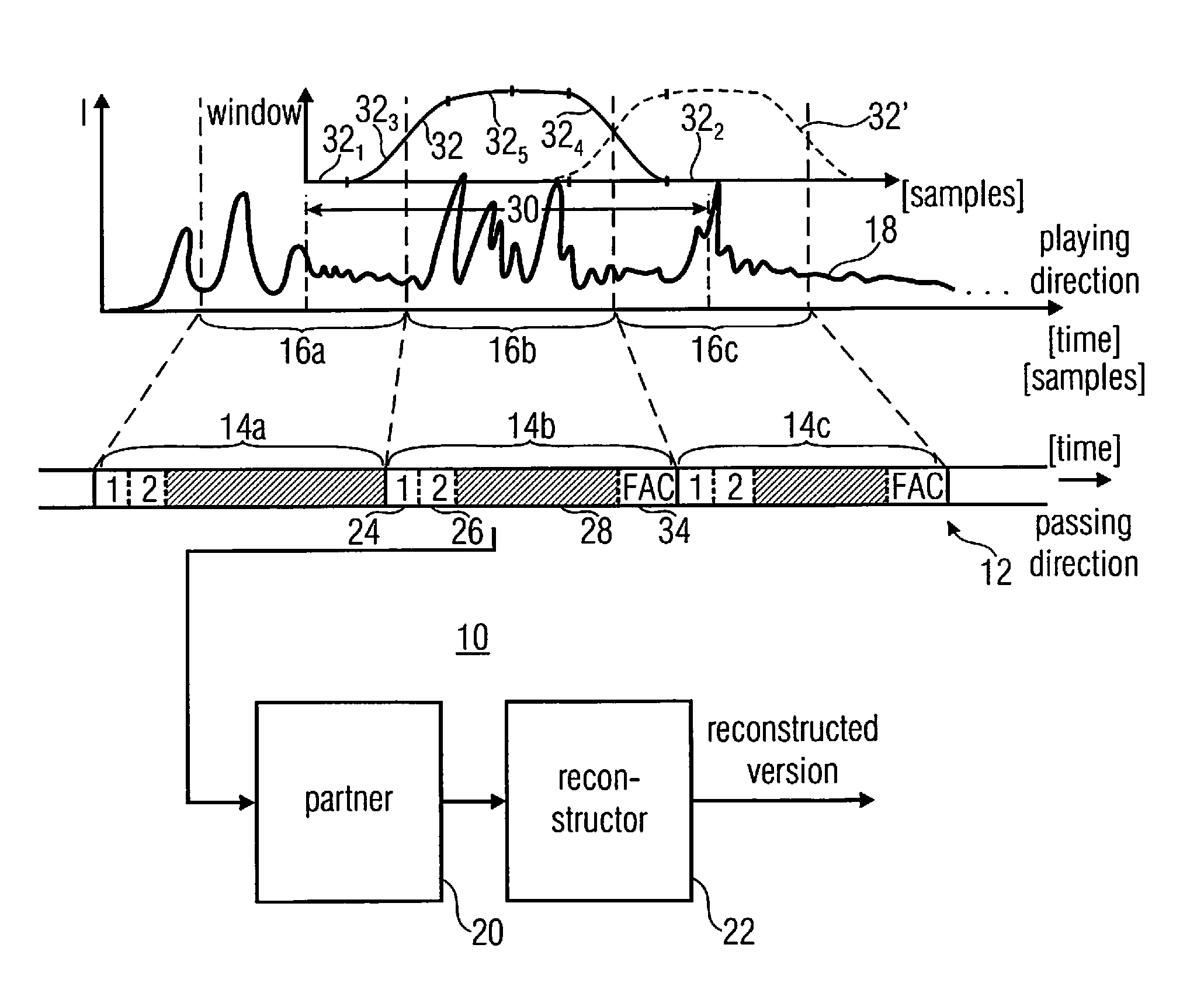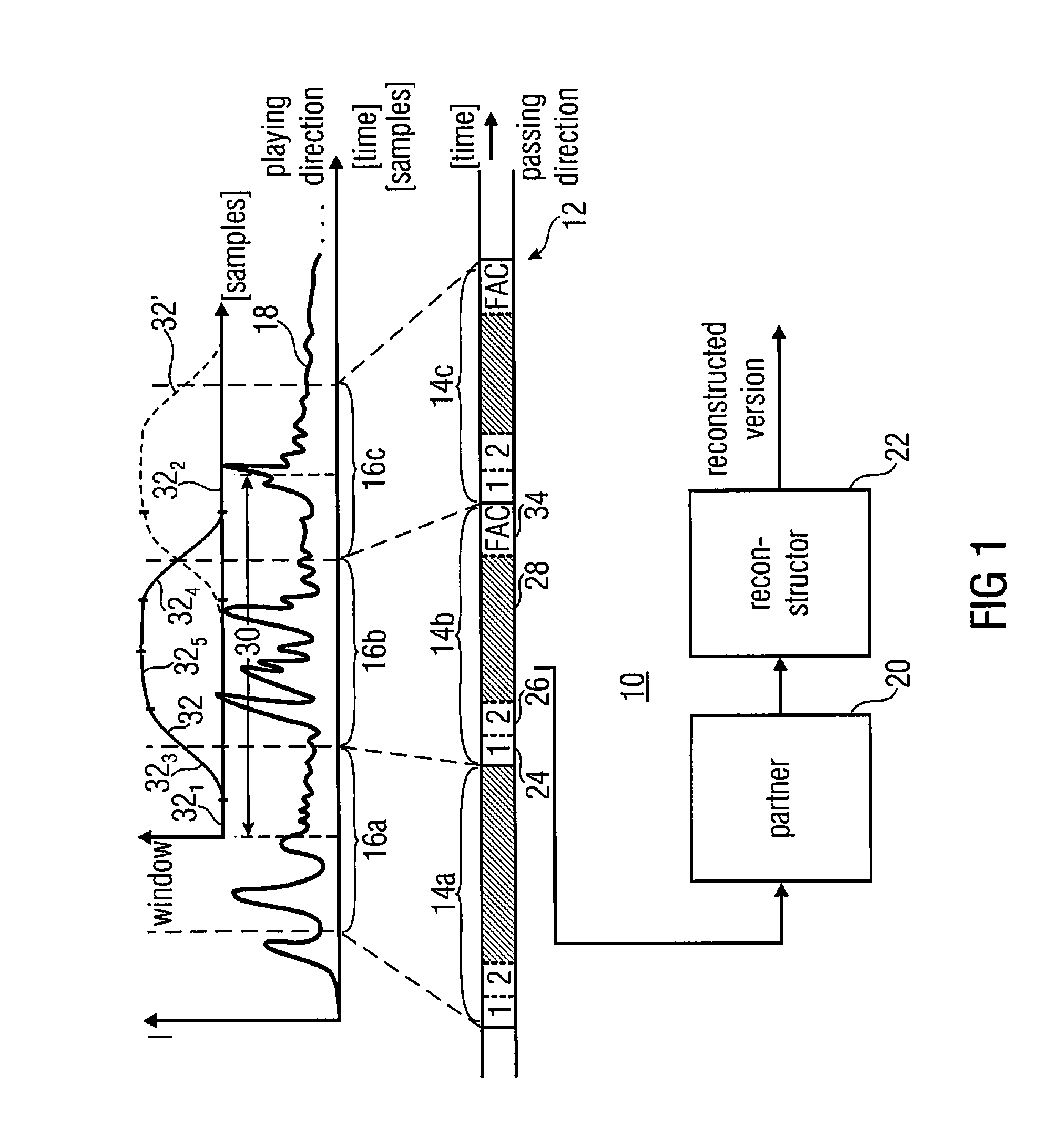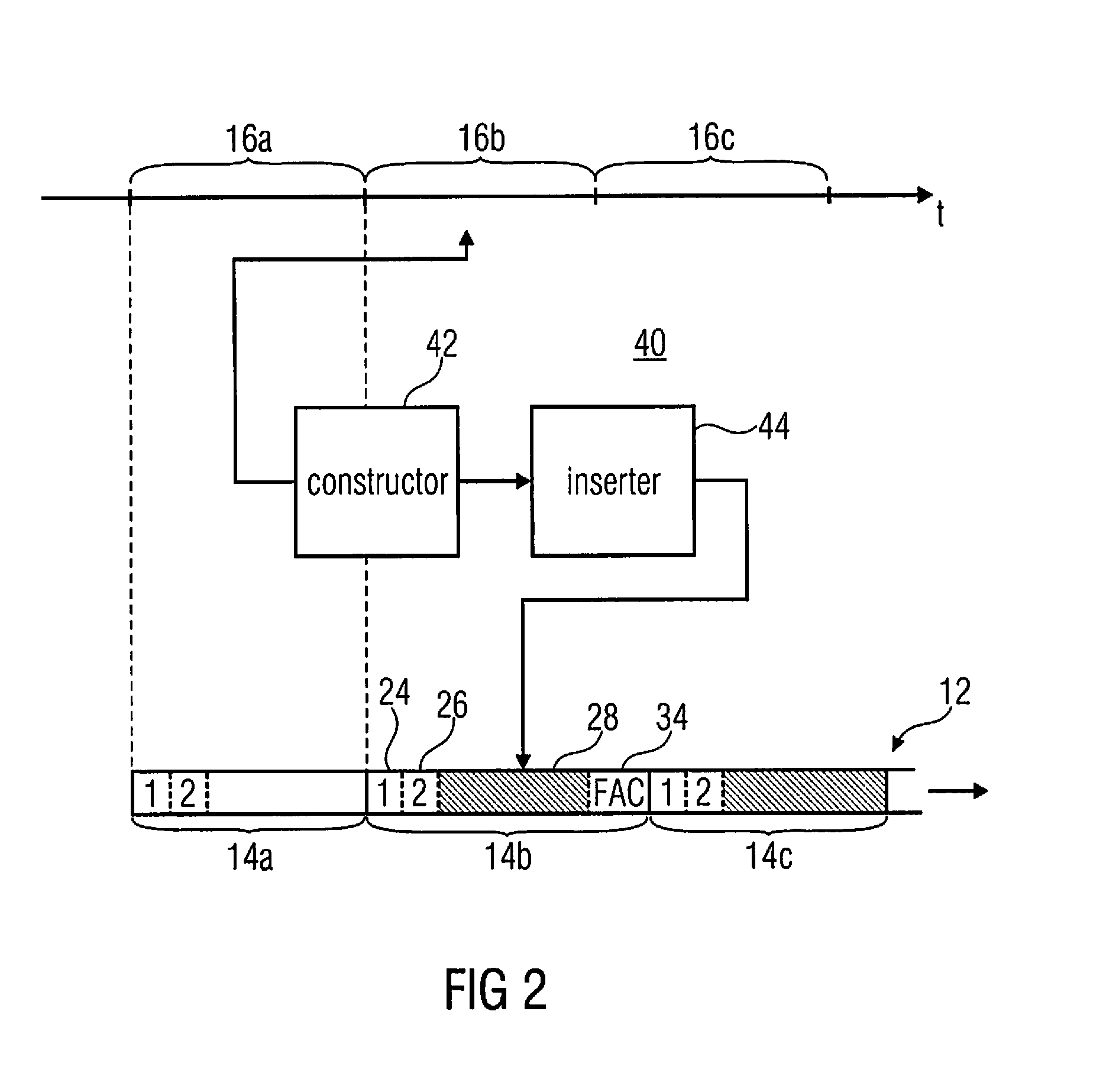Coder using forward aliasing cancellation
- Summary
- Abstract
- Description
- Claims
- Application Information
AI Technical Summary
Benefits of technology
Problems solved by technology
Method used
Image
Examples
Embodiment Construction
[0030]FIG. 1 shows a decoder 10 according to an embodiment of the present invention. Decoder 10 is for decoding a data stream comprising a sequence of frames 14a, 14b and 14c into which time segments 16a-c of an information signal 18 are coded, respectively. As is illustrated in FIG. 1, the time segments 16a to 16c are non-overlapping segments which directly abut each other in time and are sequentially ordered in time. As illustrated in FIG. 1, the time segments 16a to 16c may be of equal size but alternative embodiments are also feasible. Each of the time segments 16a to 16c is coded into a respective one of frames 14a to 14c. In other words, each time segment 16a to 16c is uniquely associated with one of frames 14a to 14c which, in turn, have also an order defined among them, which follows the order of the segments 16a to 16c which are coded into the frames 14a to 14c, respectively. Although FIG. 1 suggests that each frame 14a to 14c is of equal length measured in, for example, co...
PUM
 Login to View More
Login to View More Abstract
Description
Claims
Application Information
 Login to View More
Login to View More - R&D
- Intellectual Property
- Life Sciences
- Materials
- Tech Scout
- Unparalleled Data Quality
- Higher Quality Content
- 60% Fewer Hallucinations
Browse by: Latest US Patents, China's latest patents, Technical Efficacy Thesaurus, Application Domain, Technology Topic, Popular Technical Reports.
© 2025 PatSnap. All rights reserved.Legal|Privacy policy|Modern Slavery Act Transparency Statement|Sitemap|About US| Contact US: help@patsnap.com



